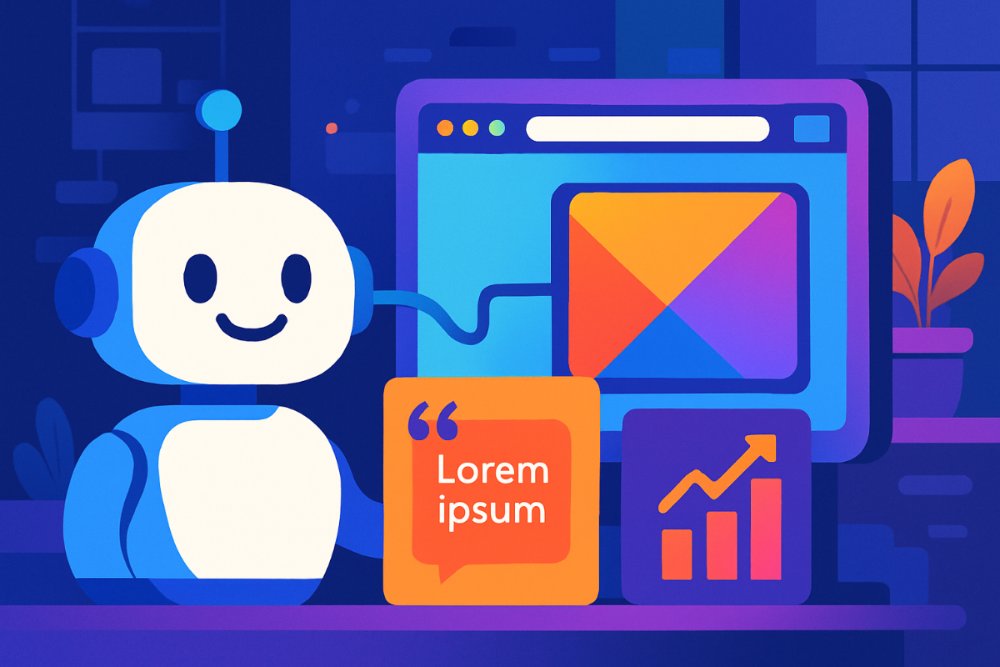- 1. Understanding the Power of ChatGPT
- 2. Setting Up Your Blog for Extraction
- 3. Automating the Extraction with ChatGPT
- 4. Preparing Your Content for Canva
- 5. Leveraging Canva for Visual Design
- 6. Automating the Workflow
- 7. Tips on Designing Social Graphics
- 8. Tracking Performance and Engaging Audiences
- 9. Common Challenges and Solutions
- 10. Future Prospects of AI in Content Creation
- Conclusion
In the modern digital landscape, content repurposing is a powerful tool for maximizing reach and engagement. This tutorial will guide you through the process of turning blog posts into social media assets using a seamless automation pipeline involving ChatGPT and Canva. By leveraging the capabilities of these tools, you can extract pull-quotes, statistics, and hero images automatically—boosting your social media presence effectively.

1. Understanding the Power of ChatGPT
ChatGPT is a sophisticated AI developed to understand and generate human-like text. By using its natural language processing capabilities, content creators can seamlessly extract engaging snippets from their blog posts. Imagine highlighting key insights, pull-quotes, or compelling statistics without the grunt work. Once integrated, ChatGPT can swiftly parse through blog text and identify potential social media content, preparing it for the next phase in Canva.
2. Setting Up Your Blog for Extraction
To extract useful content effortlessly, formatting is paramount. Organize your blogs with clear headings, bullet points, and embedded statistics. Clearly defined sections allow ChatGPT to comprehend and analyze the text efficiently. Utilizing consistent structures such as introduction, body, and conclusions guides AI tools, making extraction more reliable. With well-organized content, identifying compelling quotes or statistics becomes a straightforward task for any AI-powered tool you are utilizing.
3. Automating the Extraction with ChatGPT
The next step is applying ChatGPT for extraction. Start by feeding ChatGPT your blog’s text. Designate it to locate key elements like pull-quotes or statistics by using prompts or keywords. With proper training, ChatGPT can discern between types of content—quotes, insights, or data points, furnishing them for automation tools. Exploring API solutions can enable this feature across massive content batches, saving you time and ensuring consistency.
4. Preparing Your Content for Canva
Once ChatGPT extracts your desired content, prepare it for graphic design in Canva. Structure the extracted content in a clear, accessible format. Maintaining a systematic file with organized snippets includes categorizing quotes, statistics, and thematic elements. This preparation facilitates swift integration into Canva, streamlining the creation of visual assets. Efficient layout planning can enhance compatibility between ChatGPT outputs and Canva’s design capabilities.
5. Leveraging Canva for Visual Design
Canva is instrumental in converting textual content into eye-catching visuals that are optimized for social platforms. Use the snippets extracted by ChatGPT to create shareable graphics with Canva’s diverse templates and user-friendly editing tools. Customize fonts, colors, and layouts to suit your brand’s identity, ensuring uniform aesthetics. The key is to focus on clarity while ensuring that the visuals are appealing and resonate with your audience’s preferences.
6. Automating the Workflow
To automate this process and improve efficiency, consider integrating tools like Zapier to connect ChatGPT and Canva seamlessly. Automations can be set up to trigger content extractions and transfer of snippets directly from ChatGPT to Canva’s template for visual editing. The use of APIs and automated scripts enables this process to run in the background, reducing manual input and speeding up the creation of social assets. Streamlining these steps can significantly enhance productivity.
7. Tips on Designing Social Graphics
When translating text to visuals, understanding design basics is essential. Ensure that your graphics are simple yet vivid. Utilizing whitespace intelligently makes text more digestible. Pair bold fonts with contrasting colors for impact, especially on condensed social platforms. Remember that social media algorithms often favor visually appealing content. It’s crucial to preview designs on different devices to ensure consistency. Keeping up with design trends will also improve audience engagement.
8. Tracking Performance and Engaging Audiences
After publishing your content on social media, monitor its performance using analytics tools. Analyze metrics such as engagement, shares, and reach to understand what resonates with your audience. Utilize feedback to adjust your strategies and future graphics. Interactive content, like polls or questions accompanying social graphics, can boost engagement. Regularly refreshing content and adopting an iterative approach based on analytics insights is key to maximizing your audience’s interaction.
9. Common Challenges and Solutions
One challenge might be the initial setup complexity. Allocating time to understand integration tools like Zapier is worthwhile. Another challenge often faced is misinterpretation by AI—requiring further instructions or prompts. Remediate this by refining your instructions for ChatGPT when extracting content. Lastly, consistent design output is crucial. Establish a branding guideline for more aligned visuals through Canva. Regular adjustments based on analytics can ensure your process keeps improving.
10. Future Prospects of AI in Content Creation
As artificial intelligence continues evolving, its application within content creation and repurposing will expand. ChatGPT’s ability to understand and generate content is just the beginning. Future advancements may provide more intricate workflows and more automated features, reducing manual intervention extensively. Predictions suggest enhanced creative tools that can not only extract and design but also suggest optimized publishing strategies based on audience analysis. The future of AI in content creation is both promising and exciting.
Conclusion
In conclusion, automating the extraction and creation of social assets from blogs is a game-changer. By integrating ChatGPT and Canva, you can seamlessly transform your written content into shareable visuals, boosting your brand's online presence. Employing this automated pipeline not only saves time but also ensures consistency and quality in your social media strategies. Keep exploring new methods and tools within this domain to ensure your content remains relevant, engaging, and impactful on digital platforms.
- Learn to transform blog posts into social media assets using ChatGPT and Canva.
- Automate content extraction with ChatGPT; enhance visuals with Canva templates.
- Integrate Zapier for seamless automation, boosting brand presence on social media.